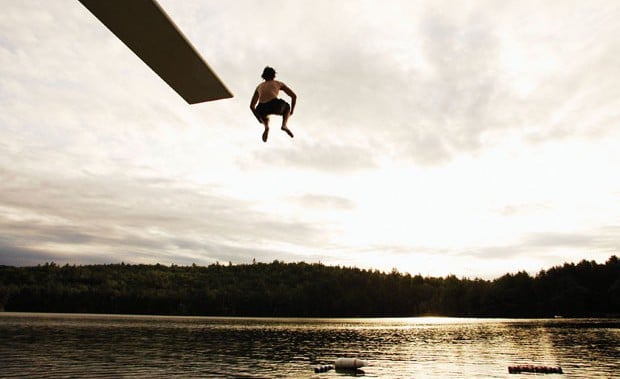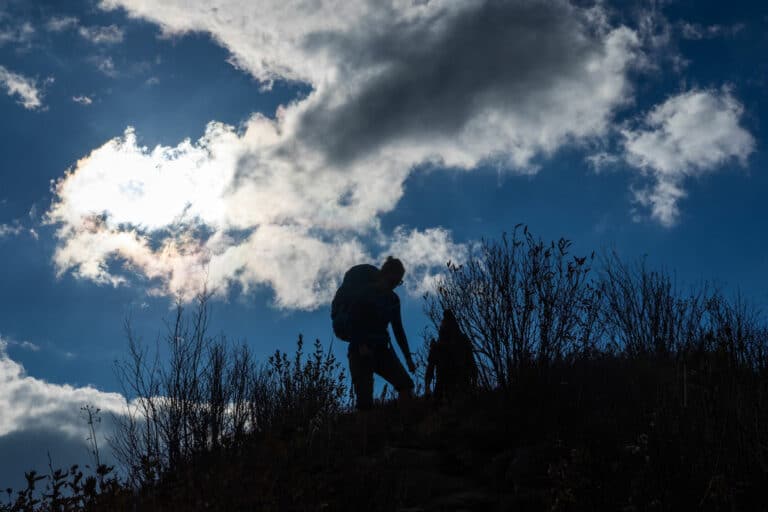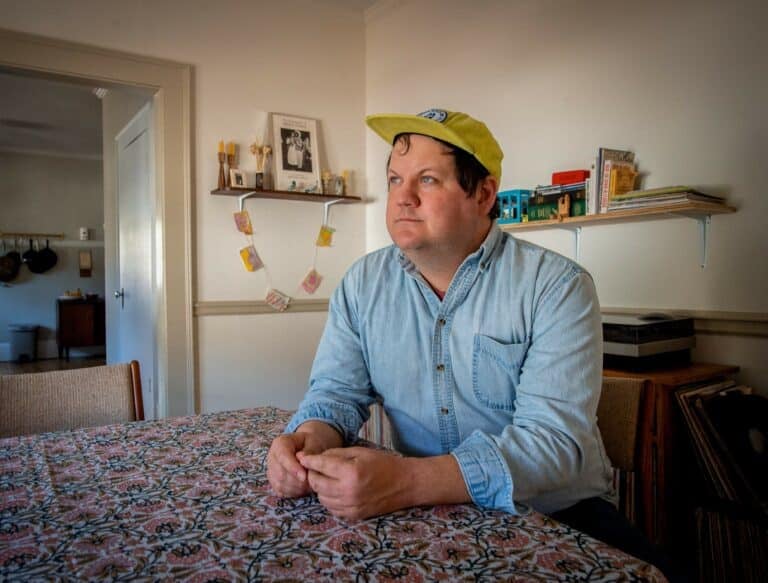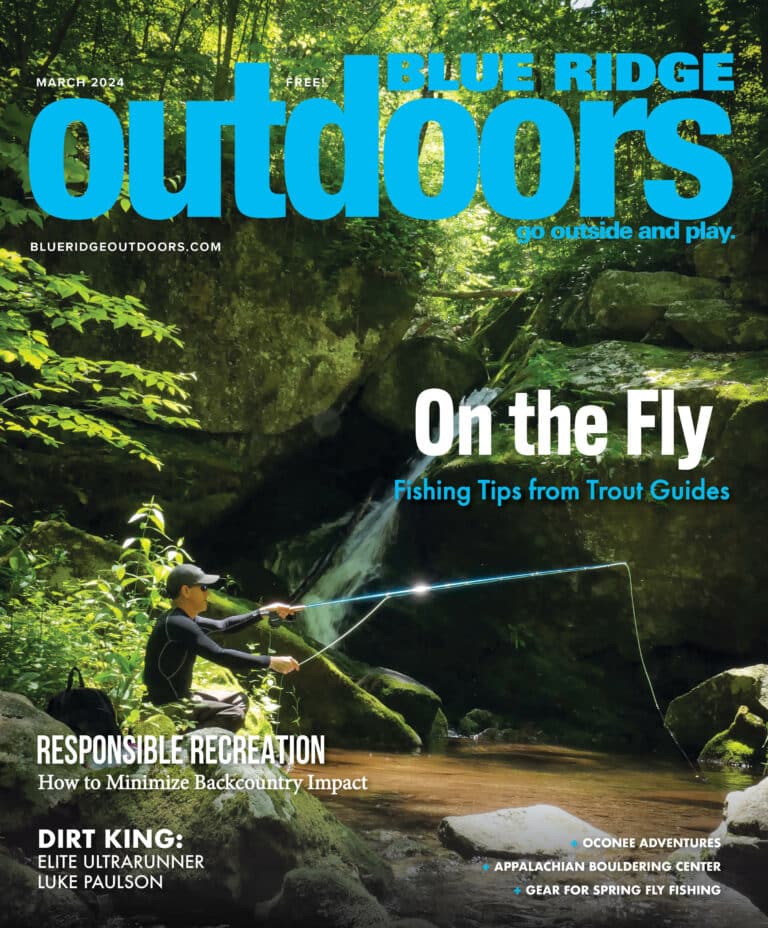Every September when I was a kid, I would get one Friday off of school. My brother and I would help my dad pack up a rented truck and we would drive up and over the mountains surrounding Big Island, headed for Camp New Hope.
My dad was the head of the Lynchburg branch of Big Brothers Big Sisters, and each September starting in the early ‘90s, Camp New Hope, just past Natural Bridge, would open its gates to Big Brothers agencies from around Virginia. Each year, as we’d roll through the gate and the rough-hewn, wooden “Camp New Hope” sign would come into view, I’d feel a familiar pang. It wasn’t exactly excitement—though it was that, too—but more some distant awareness that this was how life ought to be lived.
While the rest of the kids in Mrs. Lee’s class were desk-bound, taking turns reading aloud from Where the Red Fern Grows, I was breaking free, making my unencumbered flight into the mountains. I was happy to leave that world behind, though probably not as happy as most of the other kids who had gotten permission to skip town for the wilderness. All the other kids at Camp New Hope were part of the Big Brothers program.
If the campers were struggling at home, they didn’t show it out in the woods. They were excitable, prone to telling long-winded and half-remembered ghost stories, and eager to make friends. In short, they were kids, and friendships came fast and easy.
I still cringe at some of the outside-world posturing I brought with me to Camp New Hope each year. I remember trying to impress an older kid with my knowledge of the newly popular Marilyn Manson when I made the fatal mistake of calling him a “he.”
“Dude, Marilyn Manson’s a girl,” he said, laughing. “Why would a guy be named ‘Marilyn’?”
My mind raced, scanning my memory for any definitive proof that Marilyn Manson was a man. Nothing. Besides, what did I know? Just months earlier, I had sworn on my grandparents’ graves that the lead singer of Hanson was a pubescent girl.
“Yeah, I know. I said ‘she.’” Crisis averted.
But by and large, Camp New Hope lodged itself in my memory in less specific ways. It was at Camp New Hope that I came to love the steady, metronomic crunch of trail under boots. It was there that I came to love waking up to a dawn chill and glaucous sky after a hibernatory sleep. It was there that I came to love the sight of campfire embers swirling up into the night sky. That I came to love the outdoors.
That was the point of the place: to use the outdoors as a tool to build character and inspire passion in kids before they’re too old for it to count. What I didn’t realize at the time—didn’t learn until this year—was that Camp New Hope sat on the sprawling grounds of the Natural Bridge Juvenile Correctional Center. It was a juvie camp, designed to be used by kids serving time a quarter-mile away.
I went back to Camp New Hope recently, slipped past the gate and felt the old familiar crunch of trail under boot. The Commonwealth shut down the Correctional Center and Camp New Hope along with it in 2009, but they’ve been kept in semi-operational condition while the Department of Juvenile Justice waits for Bob McDonnell and the legislature to figure out what to do with the property. I went to see what had become of it since I was last there as a camper 15 years ago.
Of course everything was smaller and a bit shabbier than I remembered, the cabins for the most part squat, utilitarian 70s relics that were much closer together than they were in my memory. This was all to be expected. What did come as a shock was the sense of sheer abandonment. Someone had come and boarded up all the windows, but otherwise, all was as it must have been in 2009 when they closed the place. Logs still tumbled out from under the woodsheds, rakes stayed propped up next to doors, rusty pails half full of ashes still sat perched on top of trash cans. It was like the owners had boarded up the place and gotten to higher ground ahead of a hurricane and then never came back.
In my mind, this place had been brimming with life for the past decade and a half, but my memory crashed up against a present that was profoundly devoid of any signs of it. But as my eyes and expectations adjusted, I saw that life had found a way of filling in the cracks. Minnows swam lazily in the creek; daddy longlegs skittered along the paths; giant, seemingly prehistoric hummingbird moths wheeled through the air. The camp was boarded up and forgotten, but its essence remained, the air still rich with a sweet, camphoric smell and the constant hum of thousands of insects.
As I walked back to the road, past the sun-bleached lodge, past the right turn in the path that delivered you straight into juvie—how had I not noticed that as a kid?—my vague senses of grief and wistfulness washed away. I saw that the only changes to Camp New Hope were cosmetic, that the essentials—the creek trickling over rocks, sunlight dancing through the leaves—had never left. I knew that it had done its job for me, given me a taste for the outdoors that would eventually come to define a major part of my life. I think, hope, that surely it did its job for kids in far worse shape than I had ever been, little brothers or sisters struggling to keep their heads above water or young offenders from next door whose lives could go one of two ways once they were out. It sits there still, abandoned but not defeated, waiting for the chance to do its job once more.
I drove past the Juvenile Correctional Center on my way home. It was low-slung and institutional, but its setting spoke to the same philosophy behind Camp New Hope. Trees surrounded the place and the Blue Ridge soared behind it. It looked more like a summer camp than a prison. I passed an empty parking lot in front of the superintendent’s office. At the door, a light was still on.








